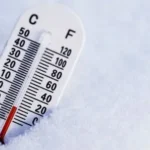When working with a BBF engine block, sleeving can be a crucial process, whether for repair or performance enhancement. Sleeving a BBF engine block involves inserting metal sleeves into the cylinders to restore or improve their condition, which can be necessary for worn-out or damaged blocks. This guide will walk you through the basics of sleeving a BBF engine block, its advantages, and what to consider during the process.
Why Sleeve a BBF Engine Block?
1. Repair Damaged Cylinders
One of the main reasons to sleeve an engine block is to repair cylinders that have sustained damage due to wear, cracks, or overheating. A properly installed sleeve can restore the cylinder’s integrity, allowing the engine to function as if it were new.
2. Performance Enhancements
Sleeving is not only for repairs. Performance enthusiasts use sleeves to reinforce the cylinder walls, allowing for higher boosts in engines that operate under extreme conditions. Upgrading to thicker or more durable sleeves can handle increased pressures and temperatures during high-performance applications.
3. Restoration to Standard Bore
For those working with vintage or classic BBF engines, sleeving can return an engine block to its original bore specifications, preserving its authenticity. This is especially useful when a rare block has been over-bored beyond safe limits.
Sleeving Process for a BBF Engine Block
Step-by-Step Overview
- Inspection and Preparation:
- Assess the engine block’s condition to determine if sleeving is necessary. The block should be cleaned and inspected for cracks or extensive wear.
- Cylinder Boring:
- Bore out the damaged or worn cylinder to the diameter required for the sleeve. This step involves precise machining to ensure the sleeve fits correctly.
- Installing the Sleeve:
- The sleeve, often pre-cooled with liquid nitrogen, is inserted into the bore. The cooling process causes the sleeve to contract, making installation easier. As it warms up, it expands, fitting tightly within the bore.
- Finishing the Cylinder:
- After installation, the sleeve is machined to match the engine’s specifications, ensuring it aligns with the rest of the cylinders for consistent performance.
FAQ
- What materials are used for engine sleeves?
- Engine sleeves are typically made of cast iron, ductile iron, or high-strength alloys, chosen for their durability and compatibility with the engine block.
- Can all BBF engine blocks be sleeved?
- Most BBF blocks can be sleeved, but it’s essential to assess the block’s condition and whether the remaining cylinder walls can support the installation.
- How does sleeving affect engine performance?
- Sleeving can enhance performance by reinforcing the cylinder walls, allowing for higher pressures. Properly installed sleeves can also improve heat dissipation.
- Is sleeving a BBF block a DIY project?
- Due to the precision machining required, sleeving is best handled by a professional machine shop with experience in high-performance or restoration projects.
- How much does it cost to sleeve a BBF engine block?
- Costs vary depending on the number of cylinders, sleeve material, and labor. It can range from $150 to $300 per cylinder, not including any additional machining or preparation.










